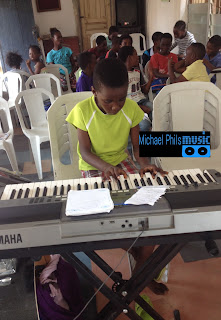The chord Progression of “Imela” by Nathaniel Bassey“. Enjoy. It is suitable for the guitarist and pianist.
Here we go:
Verse:
When I think upon your goodness;
doh
And Your faithfulness each day
ti
I’m convinced it’s not because I am worthy
lah
to receive the kind of love that You give.
soh
….It goes on and on like that till the end of the verse
Imela Imela
doh ti
Okaka Onyekeruwa
lah fah
Imela Imela
doh ti
Eze m Oo
lah soh fah
or
reh mi fah
That’s how it goes on and on for the chorus. The second verse follows the progression of the first verse.
We have the Ebook that contains the tonic solfa of over 110 Nigerian Praise and Worship Song and we also have the Ebook that contains the chord progression of over 80 Nigerian praise and worship songs. Click here to know how to get yours.


